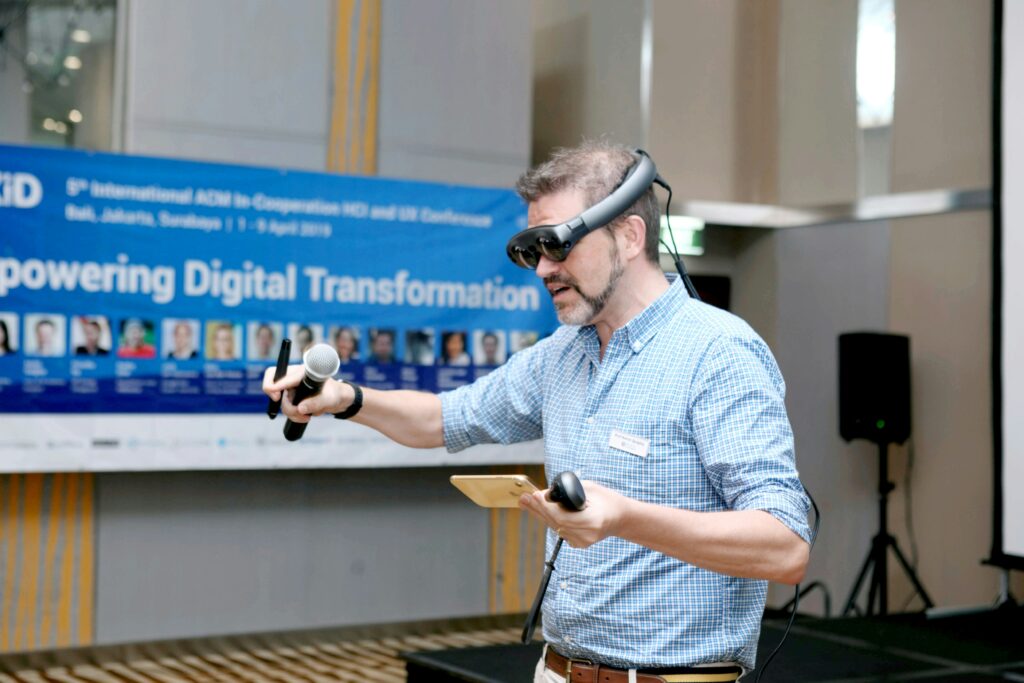
Two innovative technologies stand at the forefront of the world of education and training: Virtual Reality (VR) and Augmented Reality (AR). These immersive technologies are revolutionizing the way educators approach teaching and how students engage with learning material.
VR, with its ability to create entirely virtual environments, and AR, which enhances the real world with digital overlays, are not just futuristic concepts but practical tools being increasingly integrated into educational settings. Their impact on enhancing student engagement, providing immersive experiences and offering new perspectives in learning is becoming more apparent.
Historical Context and Evolution of VR and AR in Education
The journey of VR and AR in education has been an interesting evolution. Initially, these technologies were novelties, limited by technological constraints and high costs. Early applications were basic and often used in specialized fields like military training and medical education. However, as technology has continually advanced, VR and AR have become more accessible and affordable, paving the way for their broader use in education.
VR’s ability to simulate environments made it ideal for subjects where real-world experience was valuable but hard to replicate., like astronomy or history. AR, on the other hand, found its niche in enhancing textbooks and classroom learning with interactive, 3D models. The integration of these technologies in education gained momentum with the arrival of more user-friendly and cost-effective devices.
This period marked a significant shift from traditional learning methods to more immersive interactive experiences. The impact was profound: students could now explore ancient civilizations, dissect virtual frogs or experience chemical reactions up close, all within the safe confines of their classrooms or homes.
The evolution of VR and AR in education reflects a broader trend towards technology-driven experiential learning, reshaping the educational landscape and setting the stage for more innovative applications in learning and training.
Current Applications in Higher Education
Adopting advanced technologies like Apple Vision Pro and the Meta Quest 3 in higher education exemplifies the transformative potential of VR and AR. These tools enhance the educational experience by providing interactive and immersive learning opportunities. Its integration into the classroom is poised to revolutionize traditional learning methods, offering students dynamic ways to engage with complex material. These developments indicate a significant shift towards more engaging and technologically integrated educational environments.
Future Prospects and Scenarios
The integration of advanced VR and AR technologies in education is not just a trend but a pattern shift in the educational landscape. The collaboration between educational institutions and tech giants like Apple and Meta is opening new doors for immersive learning experiences. These partnerships are starting the creation of ‘metaversities’ – virtual campuses that offer an unprecedented level of interactivity and engagement. This approach is not limited to content delivery; it extends to reshaping the entire educational ecosystem, from classroom design to teaching methods.
Moreover, the benefits of these collaborations are multifaceted. They bring a blend of cutting-edge technology and educational expertise, leading to a more dynamic and inclusive learning environment. These partnerships also focus on the practical aspects of technology integration, such as cost-effectiveness and scalability, ensuring that the adoption of VR and AR technologies is sustainable and beneficial in the long term. As we continue advancing, we can expect these collaborative efforts to continue driving innovation in higher education, making learning more engaging, accessible and aligned with the needs of a digital-first generation.
Challenges and Considerations
While the potential of VR and AR in higher education is huge, implementing these technologies comes with challenges and considerations. Firstly, there are the cost implications. Despite the falling prices of VR and AR hardware, the initial investment, including the necessary infrastructure and software, can be significant. This is especially challenging for institutions with limited budgets.
Another major consideration is the digital divide. While these technologies enhance learning experiences, they also require access to advanced devices and strong internet connectivity. This could potentially widen the gap between students who have access to such resources and those who do not. Institutions must address this issue to ensure equitable access to learning opportunities.
Benefits for Prospective Students and Industry Value
The adoption of VR and AR technologies in higher education is not just changing the way we learn, it’s also proving to be economically significant. These technologies, valued at approximately $30.7 billion in 2023, are expected to nearly double to around $58.1 billion by 2028. This rapid growth in market value underlines the vast potential and financial viability of VR and AR in various sectors, including education.
For prospective students, VR and AR offer immersive previews of campus life, aiding significantly in their decision-making process. Virtual tours and interactive experiences provide a realistic glimpse of the institution from anywhere in the world, enhancing the recruitment process for universities and colleges. By integrating VR and AR, educational institutions are not only improving learning experiences but are also tapping into a lucrative market, promising both educational innovation and financial returns.

